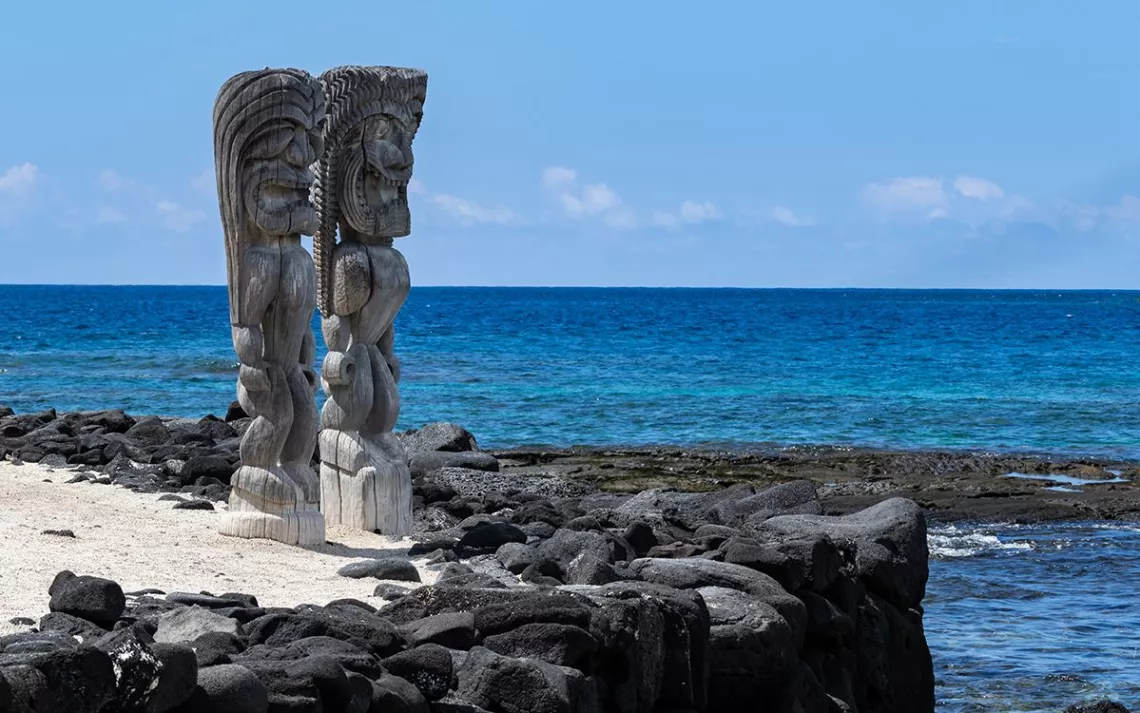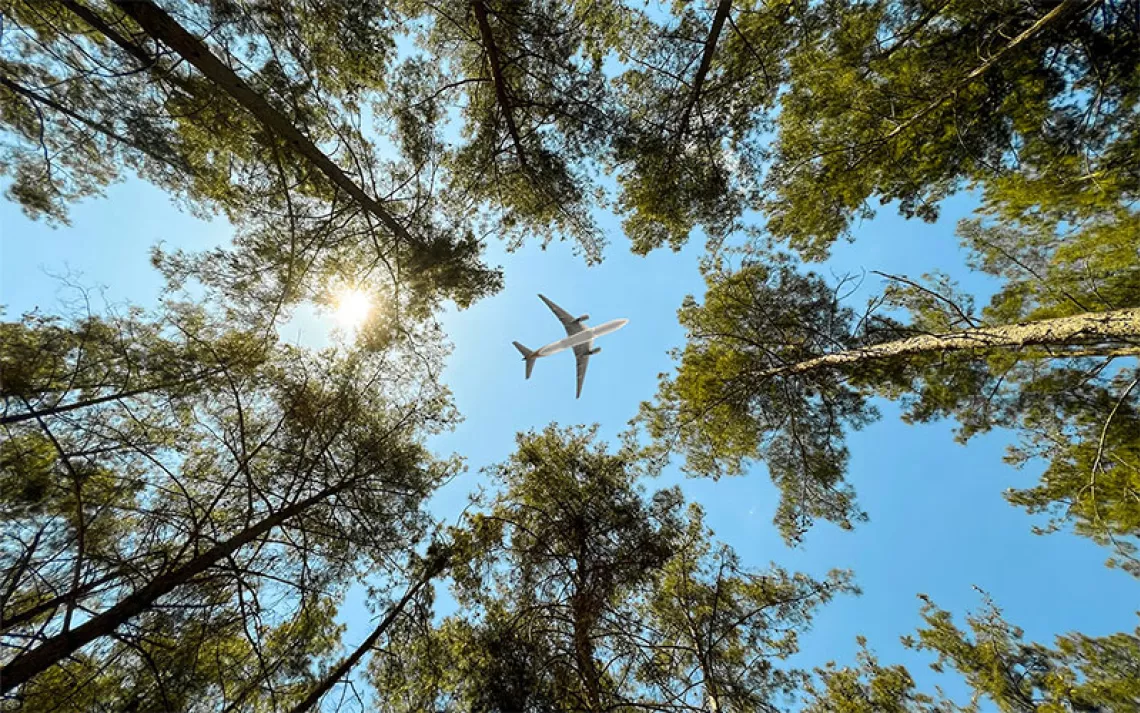Is There Hope for Travel's Future?
Here’s what residents of over-touristed destinations have to say
Driven by profits and often dictated by visitor demands, the tourism industry is notorious for its tendency to cause friction and even harm to natural environments and local communities. Now, with travel on hold during the pandemic, we have an opportunity to reroute on a more sustainable path—if, that is, we listen to the people who know our favorite places best: the locals.
We spoke with residents of places around the world that were over-touristed in Before Times, and despite the diversity of destinations, they expressed many of the same concerns and hopes. Of course, these are not the only answers; the challenges and benefits of tourism are complex, with innumerable perspectives. But here are a few key ways that locals envision a brighter future for travel.
Prioritize natural resources
Pre-pandemic, there were around 300,000 visitors in the state of Hawai'i daily. Now, with the drop in flights and 14-day quarantine in effect, daily arrivals hover around 2,000 per day.
The pandemic’s reduced travel is indeed giving many previously popular places a break—simultaneously delivering a devastating economic blow and dramatic environmental benefits: reduced air pollution, cleaner waters, and the reappearance of wildlife. Residents of Hawai'i, for instance, have been swimming and surfing at beaches that would usually be buzzing with tourists, and monk seals have been spotted sunning themselves on the shore. An “open street” project recently invited residents to walk or bike Waikiki’s busiest boulevard—now devoid of big tour buses. And Hanauma Bay, a popular snorkeling spot and the top aquatic tourist attraction in Hawai'i, has shown so much improvement in the absence of tourists, state representative Gene Ward and Honolulu city councilmember Tommy Waters have requested that it remain closed until the end of the year for continued rehabilitation.
While the pandemic has exposed the state’s economic dependence on tourism and put thousands of people out of work, if we’re looking strictly at environmental impacts, Lisa Bishop, president of the conservation nonprofit Friends of Hanauma Bay, says there’s been “a remarkable natural resurgence” since closing to visitors. “It was common to see 4,500 to 6,000 people a day at Hanauma Bay during the peak tourist seasons—well above the daily recommended visitor count of 3,200,” she says.
Hanauma Bay had one of the highest measured levels of sunscreen pollution in the state, and corals were often destroyed by visitors. “Now, for the first time in 40 years, visitors are not consistently introducing reef-toxic sunscreen chemicals into the water,” Bishop says. “And for perhaps the first time in 100 years, people aren’t injuring or destroying corals by walking on the reef flats or causing artificial sediment resuspension and sedimentation.”
But since Hawai'i will reopen eventually, Bishop says now is the time to implement policies before tourism resumes. Hanauma Bay is normally closed on Tuesdays, but additional closures and a reduction in the number of daily visitors could provide more protection and a better balance moving forward.
“For the last few years, residents have started to speak up about environmentally unsustainable tourism in our state and the need to implement a different tourism model that encompasses a smaller number of better-educated tourists and a greater emphasis on conserving our natural resources,” Bishop says. She believes visitors want to do the right thing and would, if educated with with aloha (love). Bishop says outreach needs to start with the tourism and hospitality industry, and focus on understanding and respecting Hawai'i’s culture and natural resources.
To that end, resident Ho’ohila Kawelo recently started a petition calling for a policy that would require environmental education for tour operators and guides who would, in turn, educate their guests.
Educate and collaborate
Hawai'i residents aren’t the only ones hoping for more informed visitors; everyone we spoke with emphasized the need for visitor education. “We have a responsibility to our guests and to Venice,” says Gioele Romanelli, Venice native and owner of family-run Hotel Flora. “We should educate tourists and create a consciousness, explaining that Venice is a unique place with its World Heritage, fragility, and peculiarities.”
Providing travelers with insight on local culture and history is also a priority in Kyoto, Japan. With one of the largest collections of World Heritage Sites on the planet, it attracts more than 53 million tourists each year. That volume presents challenges in terms of congestion, illegal private home-sharing, and friction with the local way of life in a place where, as Takuya Nishimatsu, director of tourism policy with Kyoto City Tourism Association explains, “ancient tradition and philosophy are passed down and deeply rooted in everyday life.”
To foster more harmony between international visitors and locals, Kyoto City Tourism Association implemented campaigns such as Akimahen and Enjoy Respect Kyoto to educate travelers on important customs and manners. Kyoto City Tourism Association is working to establish a new model of tourism wherein more sustainable tourism activities that are respectful of culture can contribute to local communities and create a better balance between residents and visitors.
Spread out
Oft-shared images of crowded Venitian canals and popular Icelandic hot springs made it look like these destinations had surpassed their visitor capacity pre-pandemic. While some specific spots were indeed overwhelmed, Iceland native Dagny Björg says there’s more to the story. She believes her country has plenty of space for hosting visitors; the problem is that much of it has been underutilized because most visitors tend to trace cookie-cutter tour routes.
“Overall Iceland didn't have an overcrowding problem,” Björg says. “The main issue was the bottleneck effect created by the majority of tourists arriving at the sole international airport, traveling to the capital city of Reykjavík, and joining big bus tour companies to travel in the same direction around the Golden Circle. If you followed that route then you were inevitably going to feel like Iceland was full.”
As souvenir stores replaced beloved local businesses and Airbnbs increasingly priced out Reykjavík residents, locals naturally grew frustrated that the downtown area of the capital was becoming “a town for tourists.” Björg says popular sights—and the roads to get to them—suffered from overuse while businesses in other areas of the country struggled with the opposite issue.
Once international tourism picks back up, Björg believes Iceland can handle the 2 million travelers it receives each year, “if they simply spread out and take the path less traveled.” (The desire to facilitate this shift, alleviate some of the pressure on hot spots, and encourage visitors to venture to other areas of the country inspired her and a handful of friends to create Hidden Iceland, a carbon-neutral tour company that takes small groups on adventures further afield.)
Stay longer, explore more
A number of people we spoke with expressed the same sentiment as Björg, including Venice native Monica Cesarato. A blogger and former bed-and-breakfast owner, Cesarato has witnessed the changes in Venice over the years and feels the problem is not the total number of visitors; it’s about when, where, and how they travel.
Venice is no stranger to crowds, she says. “Over 200,000 people lived in Venice in its peak days 400 to 500 years ago. The difference is that the people lived in the city. Now, people arrive and think they can do everything in 24 hours. Then they leave and complain that Venice was overcrowded—but they’ve only visited [hot spots] Rialto and San Marco.” She understands that those traveling from afar may be tempted to cram as much into their trip as possible but notes that “tourism is not about just dropping in and taking a picture.” And, contrary to the tours marketed by big bus and cruise ship operators, Venice is not a one-day destination.
If you want to fully experience it and help alleviate some of the over-tourism-related issues, Cesarato recommends at least a week to discover the people and city. “I understand [vacation] time is short,” she says. “Do less.” Choosing two cities instead of five, for example, will give you time to explore beyond the heavily touristed sights, adding value to your experience while contributing to the local economy.
Remember, what’s good for the host is good for the guest
In many ways, as Greece resident Mina Agnos (and several others we spoke with) explains, addressing the concerns of the locals will serve the visitors as well.
“I believe local communities [in Greece] see tourism as an industry that is beneficial both to their country and to their livelihood,” she says. “But they are concerned about the impact it has on the quality of life and the environment.” In popular destinations such as Mykonos and Santorini, the pressure extends beyond busy ports and congested streets; Agnos says the onslaught of vacation image uploads (pre-pandemic) were bogging down mobile networks, and Airbnb vacation rentals priced out locals to the point that some hotels had to build housing just to accommodate their staff.
“This is not good for the local community, and they are rightfully raising their voice,” Agnos says. And they are not alone. “This situation was slowly tearing the social and cultural fabric of [Santorini], one of the most iconic islands in the world. And even visitors—though thrilled by the beauty of the island—complained that it was simply too crowded to really experience its soul and authenticity.”
Agnos feels that a focus on quality over quantity—attracting guests that will contribute to the island and cherish its natural resources and heritage—can “benefit and enrich the community and elevate visitor experience at the same time.”
Some changes she hopes to see include limitations on short-term rentals in residential areas; expansion and better management of infrastructure such as roads, public transport, and larger pedestrian areas; economic diversification such as strengthening the agricultural sector and marketing off-season local experiences, particularly culinary; and a decrease in the daily number of cruise ship visitors.
Get real
A drastic drop in travelers due to the pandemic may force the tourism industry to, as Björg says, “focus on experiences rather than numbers,” in order to build the strong relationships and reputations necessary to survive.
Bali native Deasy Swandarini, the general manager of Tanah Gajah resort in Ubud, Bali, says authentic, unique experiences are key to standing out during the pandemic, particularly in Bali, where competition is fierce and the market is currently limited to domestic tourists.
Properties, tour operators, and travelers should recognize that the local community is more than a host. Traditional knowledge and natural environments are some of the most precious resources that, as Kenyan Doug Nagi, the conservation, community, and culture manager of Cottar’s 1920s Camp and Bush Villa in the Maasai Mara, says, should be factored into tourism decisionmaking. “Maasai people have traditionally lived at one with their surrounding habitat, eating only what is needed, using traditional medicinal plants and building sustainably. The western way of living may help economic growth, but at what cost?” he says. “Living within our means, with space for humans and nature with a balance between conservation, community, culture, and commerce will be critical for healthy humans and a healthy planet.” Local knowledge can inspire a more Earth-friendly approach, and respect for community input can lead to memorable experiences, genuine partnerships, and authentic stewardship for all—the host community, tour industry, and travelers—involved. “Cottar’s 1920s Camp is on community land and works hand in hand with the community so that business, communities, wildlife, and wilderness can prosper,” Nagi says.
Post-pandemic, travelers can continue to facilitate this trend toward meaningful experiences, artisan goods, and eco-friendly and community-conscious activities by booking with local operators and properties that provide them, and by spending travel funds at locally owned businesses. As Cesarato says, skip the one-euro souvenir shops and “go home with a good memory and real artisan products” instead.
Seize this moment
While much of the travel industry is struggling right now, it seems this moment in time is ripe with opportunities to rebuild better than before.
“We have to see this ‘downtime’ as an opportunity to really examine how we want to develop tourism products,” says Agnos. “This is the time to reevaluate the quality of the tourism that is coming in and to develop the destination, its infrastructure, experiences, and products in order to attract visitors that will provide the greatest benefit to the destination.”
The pandemic pause is offering us all—hosts and travelers—the chance to leave unsustainable practices behind and reimagine a better future for people and planet. “The important thing should be to not go back to that kind of over-tourism,” Romanelli says. “Transform this tragic moment into a new chance to rethink the balance between visitors and residents.”
 The Magazine of The Sierra Club
The Magazine of The Sierra Club




